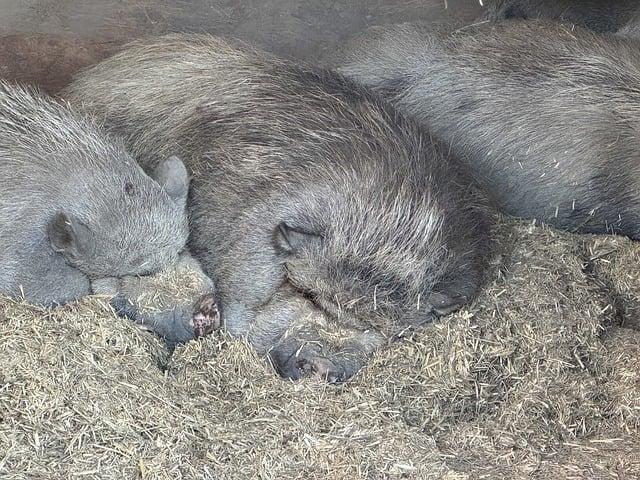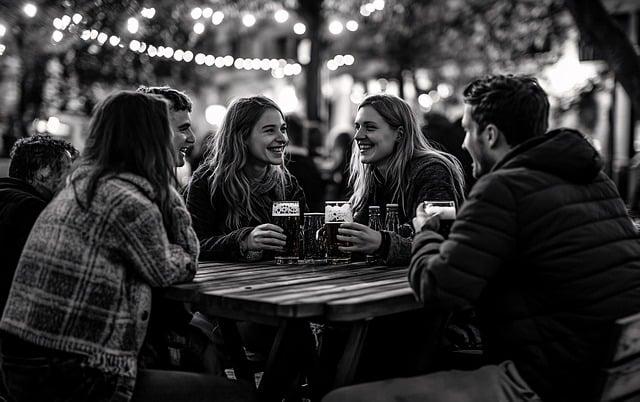As the first snowflakes danced down from the sky, the scent of roasted goose wafted through the cozy German home. Families gathered around the table, adorned with flickering candles and festive decorations. The centerpiece was a golden-brown goose, stuffed with apples and herbs, surrounded by red cabbage and dumplings. Laughter filled the air as they shared stories and sipped on spiced wine. For dessert, a rich stollen, dusted with powdered sugar, awaited. In that moment, warmth and tradition wrapped around them like a cherished blanket, making the evening unforgettable.
Table of Contents
- Exploring Traditional Dishes of a German Christmas Feast
- The Role of Festive Beverages in German Holiday Celebrations
- Creating a Cozy Atmosphere: Table Settings and Decorations
- Tips for Hosting an Authentic German Christmas Dinner at Home
- Q&A

Exploring Traditional Dishes of a German Christmas Feast
As the festive season approaches, the aroma of traditional German dishes fills the air, creating a warm and inviting atmosphere. A typical Christmas feast often features a variety of hearty and flavorful dishes that reflect the rich culinary heritage of Germany. **Roast goose** is a centerpiece for many families, seasoned to perfection and served with a delightful array of sides. Accompanying the goose, you might find **red cabbage**, braised to a sweet and tangy finish, and **potato dumplings**, which soak up the savory juices beautifully. Each dish tells a story, steeped in tradition and family recipes passed down through generations.
In addition to the main course, the festive table is adorned with an assortment of **sweets and treats** that add a touch of magic to the celebration. **Stollen**, a fruit-filled bread dusted with powdered sugar, is a must-have, symbolizing the Christmas season. Another beloved delicacy is **Lebkuchen**, spiced gingerbread cookies often shaped into festive figures and decorated with icing. To wash it all down, families may enjoy a warm cup of **Glühwein**, a spiced mulled wine that brings comfort and cheer. Each bite and sip during this festive gathering not only satisfies the palate but also strengthens the bonds of family and tradition, making the Christmas feast a cherished occasion.

The Role of Festive Beverages in German Holiday Celebrations
During the festive season in Germany, beverages play a pivotal role in enhancing the celebratory atmosphere. From the moment the first Advent candle is lit, traditional drinks become a staple at gatherings, warming both the body and spirit. **Glühwein**, a spiced mulled wine, is perhaps the most iconic of these festive beverages. Served hot and often enjoyed at Christmas markets, it is infused with a blend of spices such as cinnamon, cloves, and star anise, creating a comforting aroma that fills the air. Other popular options include **Punsch**, a fruity punch that can be made with or without alcohol, and **Eierlikör**, a rich egg liqueur that adds a creamy touch to holiday toasts.
These drinks not only serve to warm guests but also foster a sense of togetherness and tradition. Families often gather around the table to share stories and laughter, with glasses raised in celebration of the season. The act of preparing these beverages can also be a cherished ritual, passed down through generations. Whether it’s the sweet scent of freshly baked cookies paired with a warm cup of **Glühwein** or the lively chatter over a bowl of **Punsch**, these festive drinks encapsulate the essence of German holiday celebrations, making each gathering a memorable experience filled with joy and warmth.

Creating a Cozy Atmosphere: Table Settings and Decorations
To create a warm and inviting atmosphere for a German Christmas dinner, focus on table settings that reflect the festive spirit. Start with a rich, textured tablecloth in deep reds or greens, reminiscent of traditional holiday colors. Layer the table with elegant dinnerware, featuring intricate patterns or simple white porcelain that allows the food to shine. Incorporate **natural elements** such as pinecones, sprigs of evergreen, or small bowls of nuts to bring a touch of the outdoors inside. Candles are essential; opt for **various heights** and sizes to create a soft, flickering glow that enhances the cozy ambiance.
For decorations, consider adding **handcrafted ornaments** or **festive centerpieces** that celebrate German traditions. A centerpiece made of fresh flowers, berries, and candles can serve as a stunning focal point. Scatter small, decorative items like **miniature nutcrackers** or **wooden figurines** around the table to evoke a sense of nostalgia. Don’t forget to personalize each place setting with **name cards** or small gifts, such as homemade cookies or traditional marzipan, to make your guests feel special. This attention to detail will not only elevate the dining experience but also create lasting memories of a delightful German Christmas celebration.

Tips for Hosting an Authentic German Christmas Dinner at Home
To create an authentic German Christmas dinner, start by focusing on traditional dishes that evoke the warmth and spirit of the season. **Roast goose** is a classic centerpiece, often served with crispy skin and tender meat. Accompany it with **red cabbage** and **potato dumplings** for a hearty meal. For a lighter option, consider **carp**, which is also popular during the festive season. Don’t forget to include a selection of **German sausages**, such as bratwurst or weisswurst, to add variety to your table. For dessert, a **stollen** or **gingerbread cookies** will bring a sweet finish to the meal, embodying the flavors of Christmas spices like cinnamon and nutmeg.
Setting the atmosphere is just as important as the food. Decorate your dining area with **natural elements** like pine branches, candles, and ornaments to create a cozy ambiance. Consider playing traditional **German Christmas music** in the background to enhance the festive spirit. Encourage your guests to participate in the meal by sharing stories or traditions from their own families, fostering a sense of community and connection. don’t forget to raise a glass of **Glühwein** (mulled wine) or **beer** to toast the occasion, making your German Christmas dinner a memorable experience for everyone involved.
Q&A
-
What traditional dishes are served at a German Christmas dinner?
German Christmas dinner often features a variety of traditional dishes, including:
- Roast Goose: A classic centerpiece, often served with red cabbage and dumplings.
- Duck or Pork: Alternatives to goose, commonly accompanied by seasonal vegetables.
- Potato Salad: A popular side dish, especially in southern Germany.
- Stollen: A fruit bread with nuts and spices, typically enjoyed for dessert.
-
When is the German Christmas dinner typically served?
The main Christmas dinner is traditionally held on Christmas Eve (Heiligabend), where families gather to celebrate and enjoy the festive meal together.
-
Are there any special drinks served during the dinner?
Yes, beverages play a significant role in the celebration. Common drinks include:
- Glühwein: A warm spiced wine, perfect for the winter season.
- Beer: A staple in German culture, often enjoyed with the meal.
- Non-alcoholic options: Such as apple cider or fruit juices for those who prefer them.
-
Is there a specific way to set the table for a German Christmas dinner?
Yes, the table is often set with care, featuring:
- Festive decorations: Including candles, ornaments, and sometimes a Christmas centerpiece.
- Fine china and glassware: To create an elegant dining experience.
- Place cards: To indicate seating arrangements, adding a personal touch.
As the festive season unfolds, a German Christmas dinner invites us to savor tradition and togetherness. From hearty roasts to sweet treats, each dish tells a story, weaving a tapestry of flavors that celebrate the warmth of family and the joy of the holidays.

大家好,我是彼得潘,專業的手法身體治療師。我喜歡探索和研究各種主題,並透過與人工智慧的合作分享專業、實用、有趣的文章。我們定期進行人工審核,以確保內容的準確性。如果您發現文章中有任何不準確的地方,請隨時與我們聯繫,我們會及時糾正。您可以透過 [email protected] 與我們聯繫。



